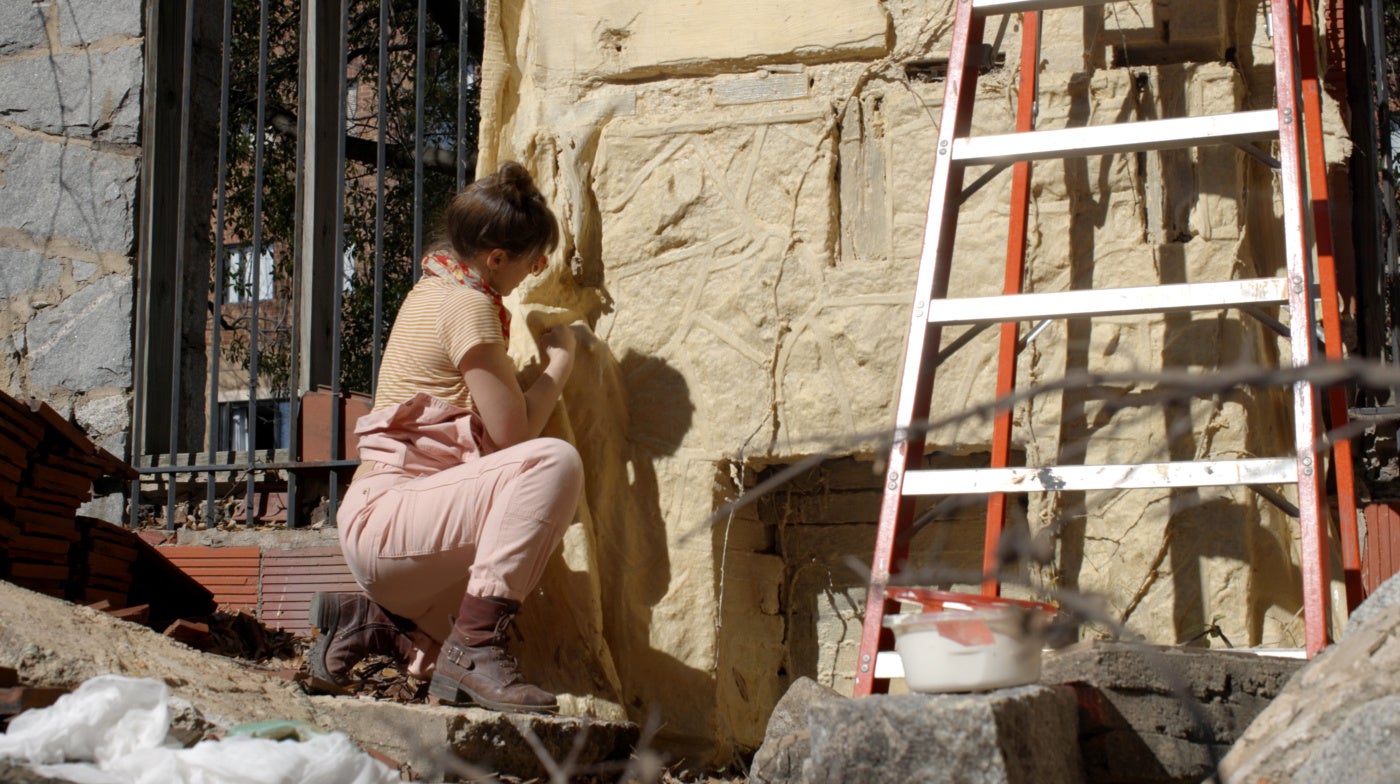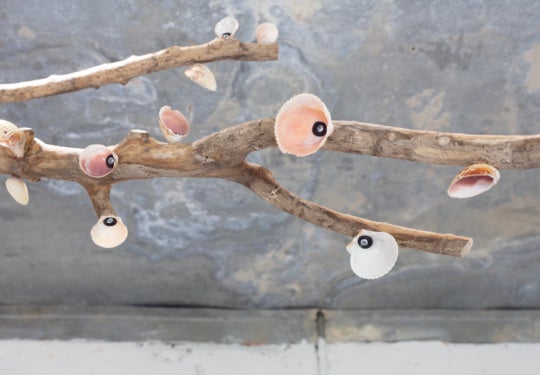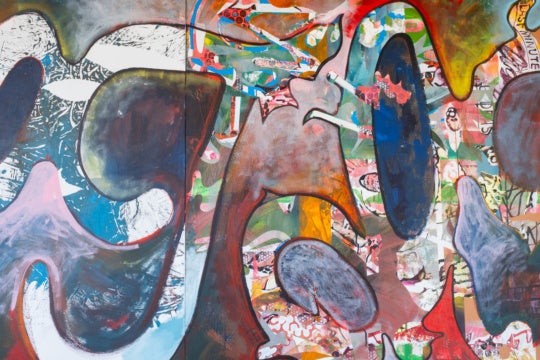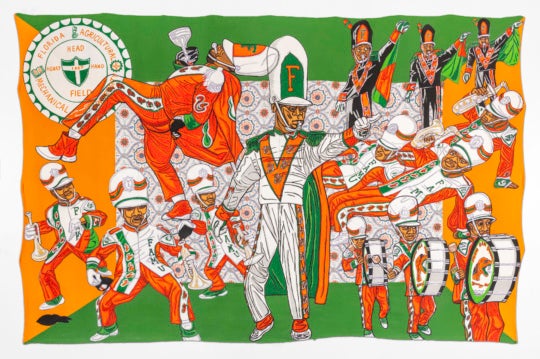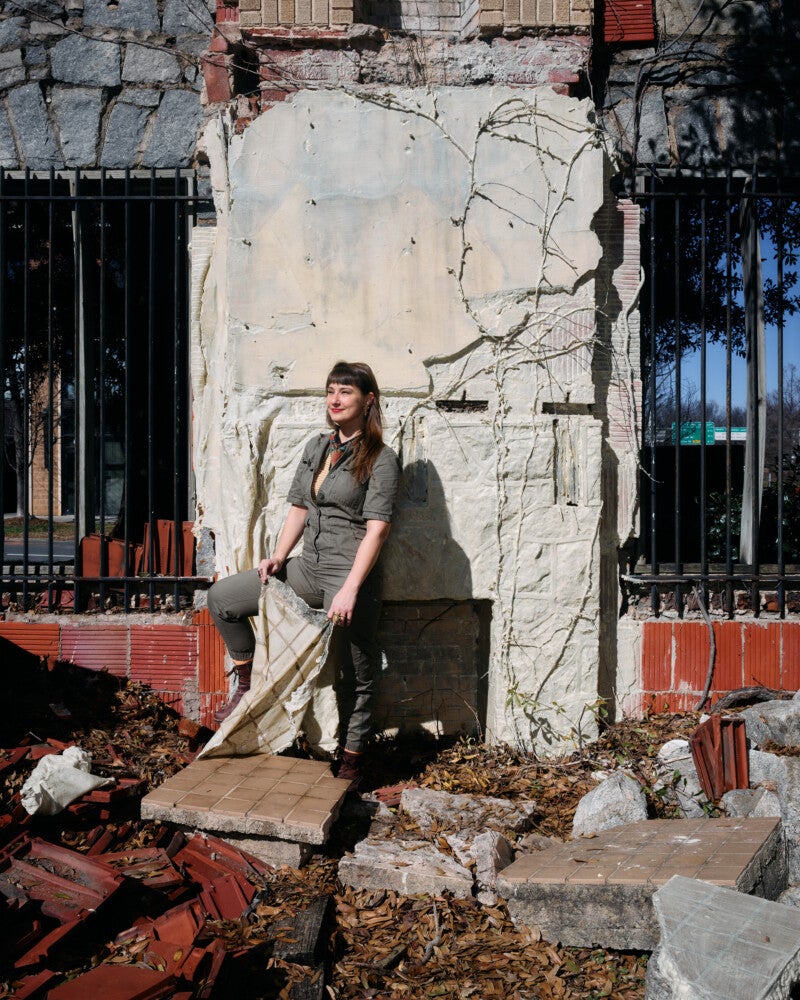
How do we preserve a forgotten space? In her second-story studio in New Orleans, Carlie Trosclair posed this question to me as I sat amidst her attempts to address this complex issue. Through her work, Trosclair explores the process of archiving and maintaining place by casting various architectural and natural structures in latex. The empty casts of lamps, tree trunks, and architectural motifs give tangible form to abstract memories of space, serving as gentle reminders of the moments, objects, and places we seek to evoke. Her work allows us to come to terms with loss and its inevitability, a concept that is especially poignant for those who live on the fringes of society.
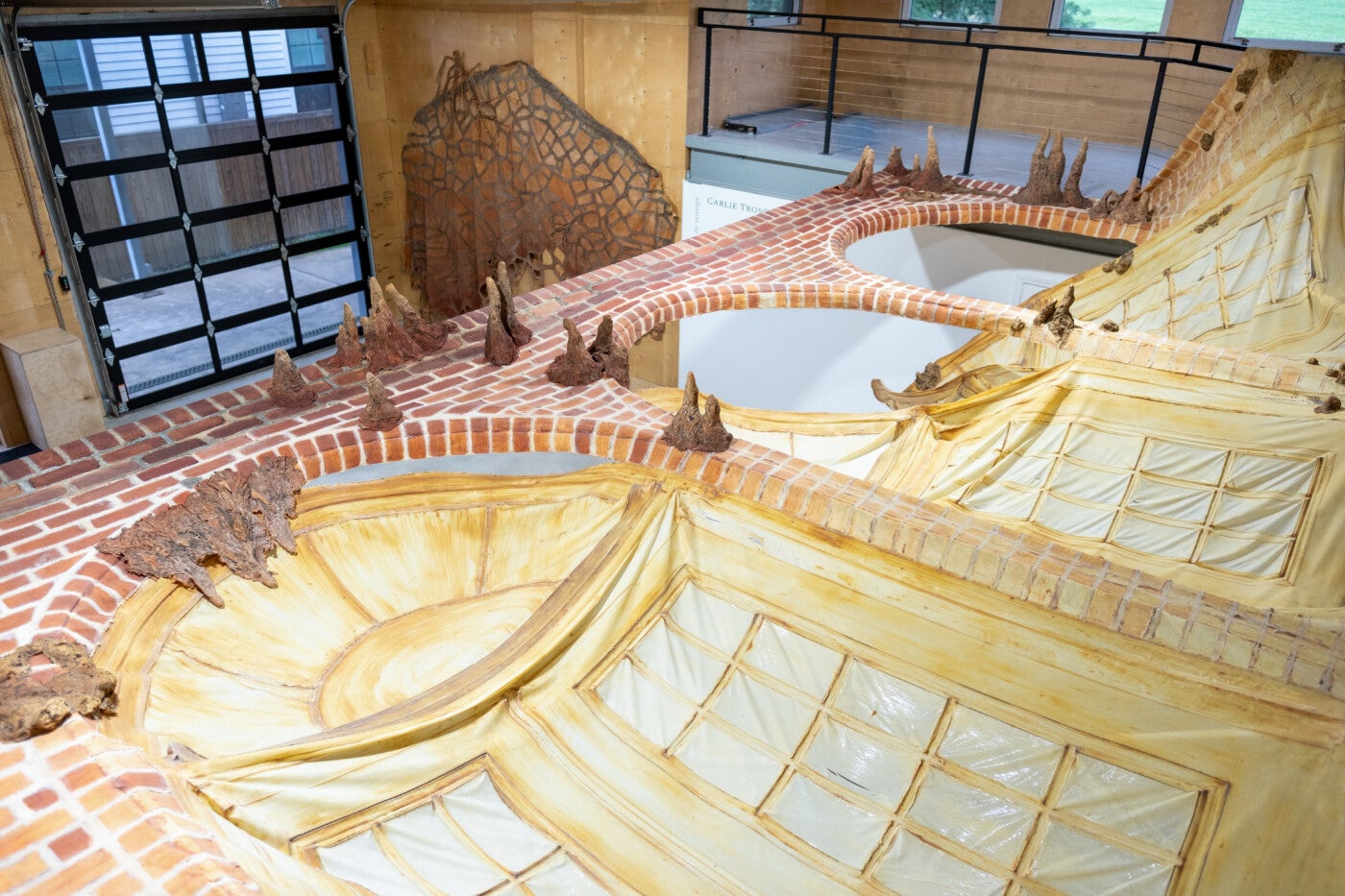
Shabez Jamal: I‘ve been sitting with this statement you made during our last conversation about the idea of home and its genealogy and, more broadly, the genealogy of space and how you engage with that idea. With that, I’ve understood your work as being very much grounded in the South and the Midwest, as a conversation between those spaces. But, now it seems you’re opening up your world to include other locations that don’t necessarily look or exist in the same ways. However, the work you’re producing is still rendered, at least as I experience it, in a Southern manner in so many ways. This leaves me to wonder, how do you engage with new places? How are you entering into a relationship with these spaces and objects?
Carlie Trosclair: I think it’s something that has come to the forefront in hindsight. Because of my interests and a practice of staying attuned to what makes me feel curious and excited naturally, it has folded together to emulate parts of me that aren’t necessarily at the forefront of my consciousness. So when I’m in a completely different environment than New Orleans, just by the nature of my understanding of learning about a place, I’m coming to it as a visitor who’s listening and learning through conversation and exploration: and by default through a New Orleans lens as a metric. I like to go to estate sales and antique stores to get a feel for the overall, not just aesthetic, but, trying to find patterns of collecting and connections within a city as an indicator of what is important to the people who live there. And through that, realizing I’m essentially a vessel, traveling, creating my own kind of genealogy of home, just by nature of moving through space with intentionality and finding rootedness no matter where I am.
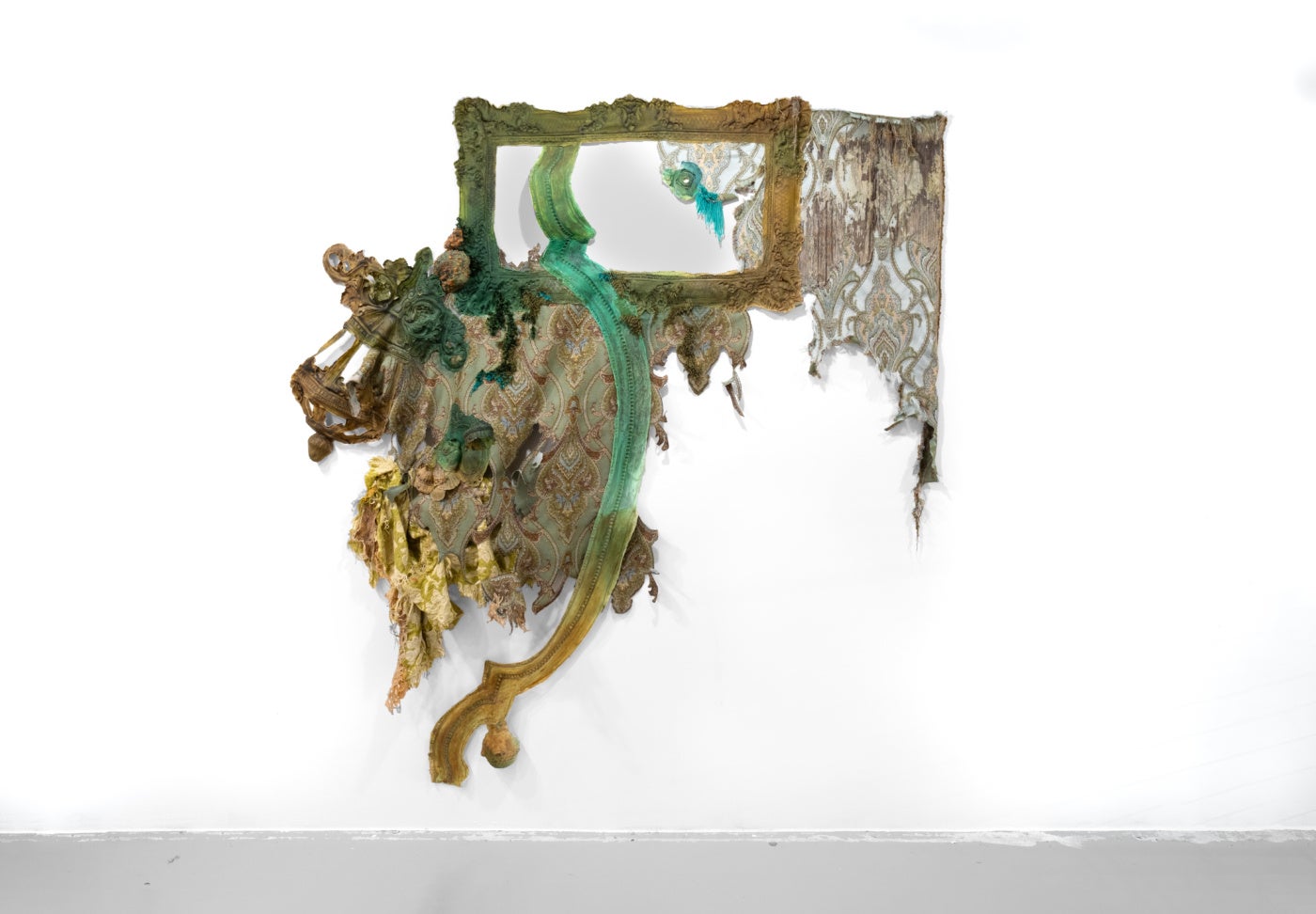
SJ: I think that’s very visible in the work. Something I want to sit with further is these patterns and connections to New Orleans you find in these new places and the importance of that within your work. You and I began our friendship in St. Louis and have also shared time/space in New Orleans. Those two cities share a connection through their history so witnessing your work and the way that you were able to draw upon two places that visually look different but share many similarities culturally, I’m wondering how your time in St Louis has impacted the way your work has developed as a practice of finding patterns and connections amongst all of these different cities and bridging them back to the Gulf, back to Louisiana?
CT: Yeah, I think at the core of it, my interest in the architecture of St. Louis was because of growing up around old buildings. I was completely awestruck at the beauty of the design and intricacies of brickwork in St Louis. But when I actually, started exploring buildings with a friend and later collaborator, who’s an architectural historian/preservationist, I remember being completely overcome by the familiarity of loss. I wasn’t expecting to walk into homes that looked like castles and find that people had left in a hurry or had left behind sentimental things. So immediately, I felt very overwhelmed by the way it reminded me of Katrina, looking through my grandma’s window and seeing the aftermath. So, just by nature of that, I got curious about the reasons why people would have to flee or leave abruptly in St Louis. Then, that, of course, rippled out to learning about white flight, foreclosure and eminent domain. Loss, grief, and erasure of history are still such very human experiences across individual causes.
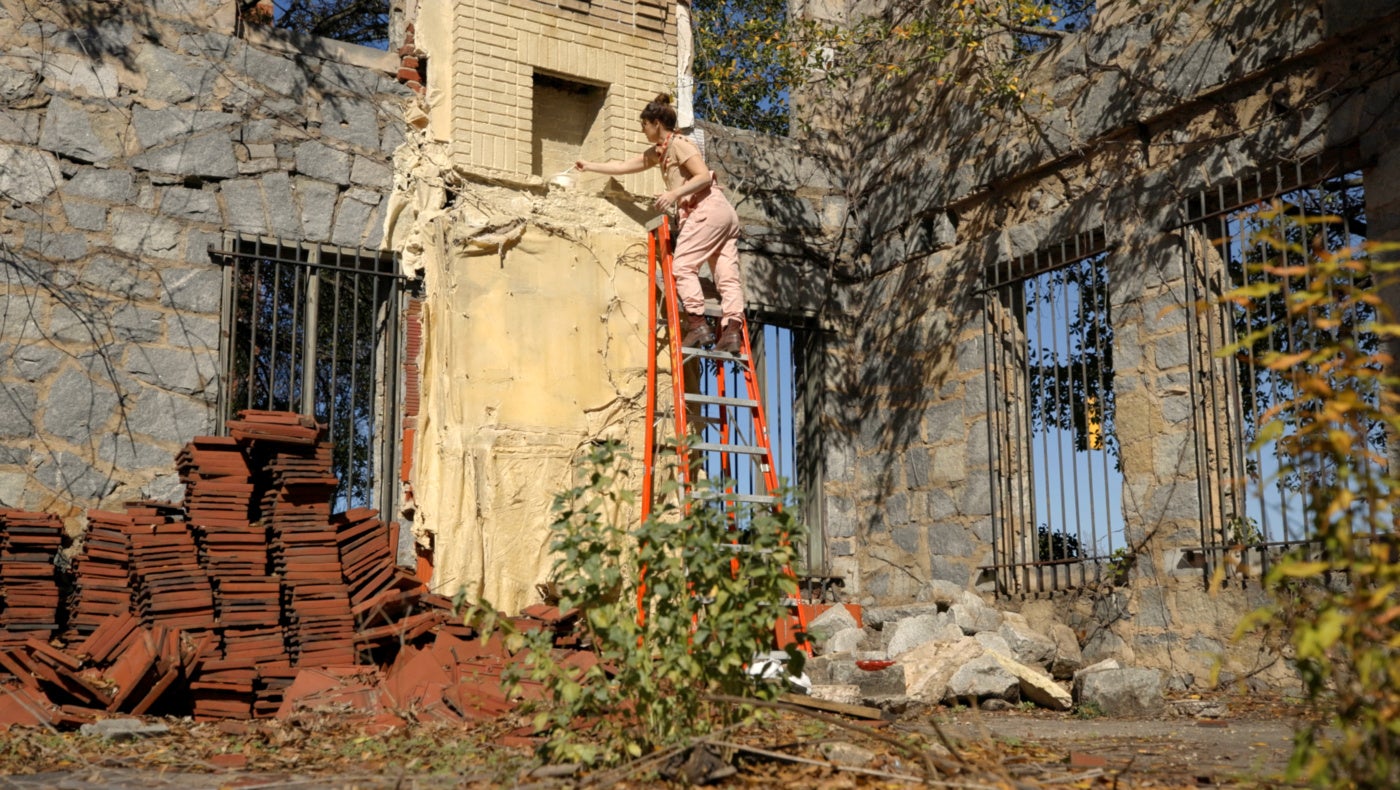
SJ: Yes, hearing you talk about, working with the preservationist and thinking about the materiality of the work that you make, it all makes sense. Latex is used as material, in some ways to preserve, but instead, you use it to capture the object’s essence. I’ve always approached [your work] as being about loss, but now, after hearing you speak and tying it back to the act of preservation, I’m approaching your work from a place of possible optimism. So, how do you work through knowing that loss is imminent while preserving in case there is a future?
CT: I want to point out that latex is specifically used in historic preservation as the intermediary between an original historic object [and its reproduction] for restoration. So I think, in and of itself, it already holds that duality within it. The hollowness reveals how latex, as a material, when it’s thin enough, is able to absorb light, and I think about that a lot. Holding something as ungraspable as light. It allows me to look at the hollowness as a receiver of the viewer’s own loss or grief or hope. Loss and hope exist at the same time, and I explore that idea within the display of these works. Whether it’s something that’s evolving or devolving is not always clear; whether it’s unraveling or being mended. The openness of that in-between space allows the the viewer to bring to it what comes up for them.
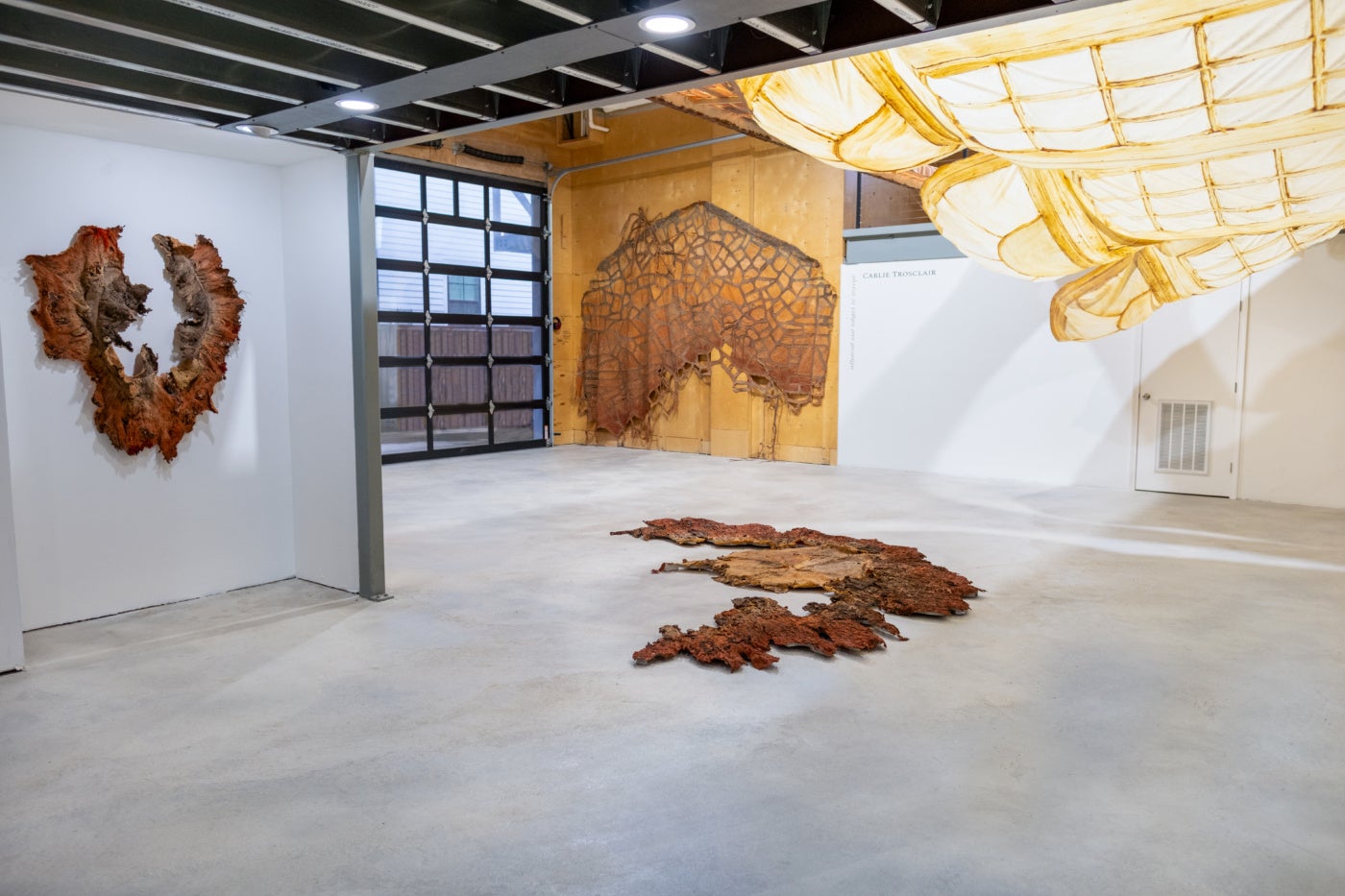
SJ: Yes, your work requires a particular type of looking that reveals things that aren’t apparent when we visually engage a place revealing the haptics of space-making. I like to think that memory and architecture are really abstract things that change and move depending on your relationship with them. So, I’m wondering if you’re understanding of space/ place/ architecture in that way influences how you collect and create spaces?
CT: I like that you said that it’s about a type of looking. I think a lot about intentional looking. I operate from a place of nostalgia and longing because of the loss of grandparents’ and their things and having one grandparent completely lose their home in Katrina—so that’s part of my archive gone. There’s also this deep whitewashing that comes from capitalism and this mentality of thinking about future sales and not wanting to personalize or live in your home “too much.” So, intentional looking is about re-embedding value bye elevating an object that is, imbued with memory or has some level of importance and holds history within it. So, the way that you care for and tend to it reflects your care for its longevity. In the studio, you brought up a really poignant distinction between repair and upkeep.
SJ: Yes, I think that all of that was very generative. I forgot about the repairing/upkeep conversation but I thought that was a great distinction that you and I worked through in our initial conversation. Where does the upkeep begin and the repair end? And what is the distinction between the two?
CT: Yeah, I would love to talk about that. You know, latex can be built up [in] as many layers as you want, which affects its structure and longevity. I’m really interested in pushing the medium as much as possible, which means the thinner it gets, the more susceptible [it is] to tearing. There’s something about when it’s fragile and it requires my careful peeling and navigating between cracks and crevices. There are still tears, but that tells the story of my role within the process. So it’s less about the object, and it becomes an experiential remnant of both the building’s history, and my relationship to noticing and looking very intently and incrementally tending to its up keep. I think love is attention and care, you know? like I am in it with whatever that surface is. It’s rough on my hands and my body, you know? And then, if it shows wear and tear, just from that tension and that struggle, the mending of it adds this other layer of value where I am stewarding this relic.
SJ: Yes! Correct me if I’m wrong, but I’m understanding upkeep/mending to be in relation to the object and your practice overall is doing reparative work by seeing the building in a way that it probably hasn’t been and elevating its importance. So, in some ways, the site specificity of your work feels reparative, in that way, right?
CT: I think thats a byproduct of my commitment to understanding the ways in which we can decolonize ourselves. It’s taken a while, but it’s coming through in the work in a more organic way and making links between the way that nature regenerates itself and reparative justice. A throughline that I think is really essential. We always want immediate results, right? This is rooted in whiteness and capitalism. But if we look at relationship building and community building, there has to be room for growth and repair within that. There has to be conflict resolution. There has to be time spent with and in relationship to, right?
